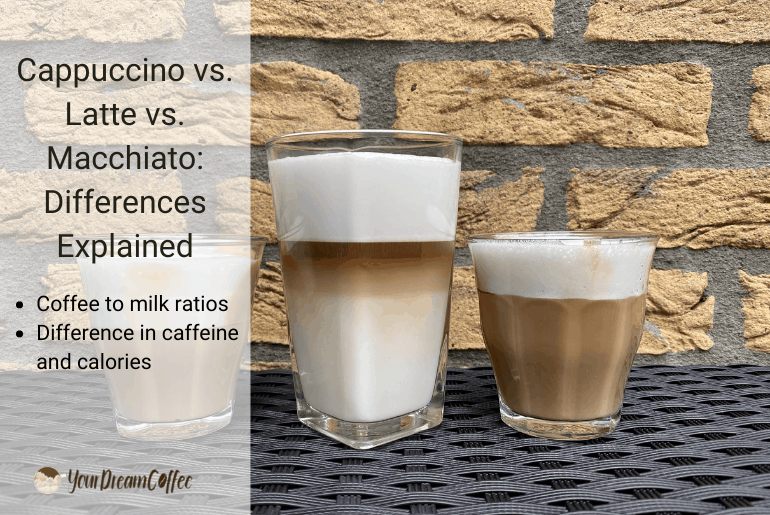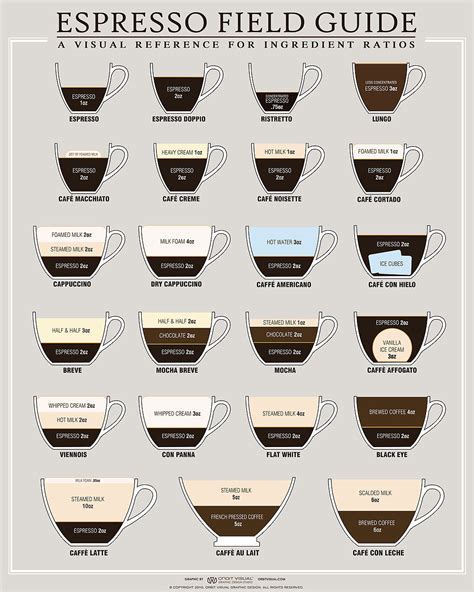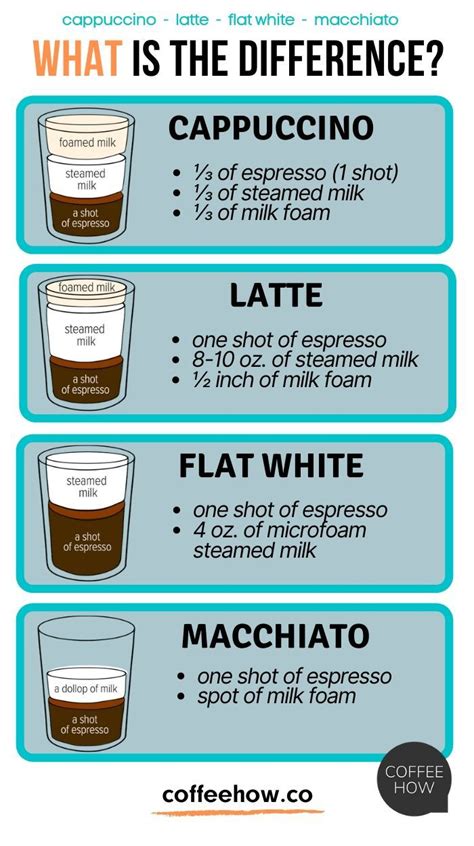Cappuccino Vs Cafe Latte

The cappuccino and the cafe latte are two of the most beloved coffee beverages worldwide, each with its unique charm and distinct flavor profile. These espresso-based drinks have captivated coffee enthusiasts for decades, and their popularity shows no signs of waning. In this comprehensive exploration, we delve into the nuances that set these two iconic beverages apart, shedding light on their origins, preparation methods, and the reasons behind their enduring appeal.
The Origins and Evolution of Cappuccino and Cafe Latte

Tracing their roots to Italy, the cappuccino and cafe latte have evolved over time to become global favorites. The cappuccino, a name derived from the Capuchin friars, gained popularity in the early 20th century. Traditionally, it consists of equal parts espresso, steamed milk, and milk foam, creating a harmonious balance of bold coffee and creamy textures. On the other hand, the cafe latte emerged in the 1950s and took inspiration from the Italian coffee culture. It showcases a more generous amount of steamed milk, resulting in a milder coffee experience that appeals to a broader audience.
Key Differences in Preparation and Taste

While both beverages share a common foundation in espresso, their preparation techniques and flavor profiles set them apart.
Cappuccino
A classic cappuccino is meticulously crafted with a 1:1:1 ratio of espresso, steamed milk, and milk foam. The espresso shot forms the base, delivering a robust and intense flavor. The steamed milk, carefully aerated and stretched, adds a creamy mouthfeel without overpowering the espresso. The milk foam, often meticulously decorated with artistic designs, provides a light and airy contrast, enhancing the overall drinking experience. The result is a harmonious blend of bold coffee and creamy notes, with a subtle sweetness derived from the milk.
| Ingredients | Quantity |
|---|---|
| Espresso | 1 shot (30-40 ml) |
| Steamed Milk | Equal to espresso shot |
| Milk Foam | Equal to espresso shot |

Cafe Latte
The cafe latte, a more indulgent take on coffee, features a higher proportion of steamed milk, typically 2:1 in favor of milk. The espresso shot still forms the backbone, but the focus shifts towards the steamed milk, which is gently aerated to create a creamy, velvety texture. This drink is characterized by its mild and smooth flavor, making it an ideal choice for those who prefer a less intense coffee experience. The milk’s sweetness complements the espresso, resulting in a well-rounded and comforting beverage.
| Ingredients | Quantity |
|---|---|
| Espresso | 1 shot (30-40 ml) |
| Steamed Milk | 2 parts, approximately 12-16 ounces |
Exploring the Coffee Culture: Where Cappuccinos and Cafe Lattes Thrive
Both beverages have found their niches in different coffee cultures around the world. Cappuccinos, with their bold flavor and artistic appeal, have become a staple in European cafes, particularly in Italy and Austria. The focus on precision and the visual presentation of the milk foam make cappuccinos a beloved choice for coffee connoisseurs. In contrast, cafe lattes have gained immense popularity in North America and Australia, where coffee culture leans towards a more relaxed and social experience. The generous amount of steamed milk makes cafe lattes a go-to choice for those seeking a comforting and mellow coffee drink.
Health and Nutritional Considerations
When it comes to health and nutritional aspects, both cappuccinos and cafe lattes offer similar benefits and considerations. As espresso-based drinks, they provide a natural boost of caffeine, aiding in alertness and energy. The addition of milk brings essential nutrients like calcium and protein. However, it’s important to note that the calorie content can vary depending on the milk type and serving size. Skim milk options can be a healthier choice for those watching their calorie intake, while whole milk adds a richer, creamier texture but with a higher calorie count.
Cappuccino Nutritional Facts (8-ounce serving)
- Calories: Approximately 80-120 calories
- Caffeine: 75-100 mg
- Fat: 2-4 grams (depending on milk type)
- Protein: 5-7 grams
- Calcium: 150-200 mg
Cafe Latte Nutritional Facts (12-ounce serving)
- Calories: Approximately 150-200 calories
- Caffeine: 75-100 mg
- Fat: 4-8 grams (depending on milk type)
- Protein: 6-10 grams
- Calcium: 200-300 mg
Conclusion: Finding Your Perfect Coffee Companion

Whether you’re drawn to the bold and artistic nature of the cappuccino or prefer the comforting embrace of a cafe latte, both beverages offer unique and delightful coffee experiences. Understanding the subtle differences in preparation and taste can guide you towards your preferred choice. So, the next time you find yourself in a coffee shop, armed with this knowledge, you can confidently order your perfect cup, knowing exactly what to expect.
Can I customize my cappuccino or cafe latte with alternative milk options?
+Absolutely! Many coffee shops now offer a variety of milk alternatives, such as soy, almond, oat, or coconut milk. These options cater to dietary preferences and allergies, allowing you to enjoy your favorite beverage without compromising taste or texture.
Are there any variations or popular twists on cappuccinos and cafe lattes?
+Indeed! Baristas and coffee enthusiasts have created numerous variations. Some popular twists include the Cappuccino Freddo, a cold version of the classic, and the Latte Macchiato, where the layers are reversed, with espresso floating on top of the milk. These variations offer a fun way to explore different flavor profiles.
How can I make a cappuccino or cafe latte at home with the perfect foam consistency?
+Creating the perfect foam at home requires practice and the right equipment. Invest in a quality milk frother or an espresso machine with a steam wand. Ensure the milk is cold and fresh, and practice aerating it to achieve a smooth, microfoam texture. Patience and attention to detail are key to mastering the art of foam.



